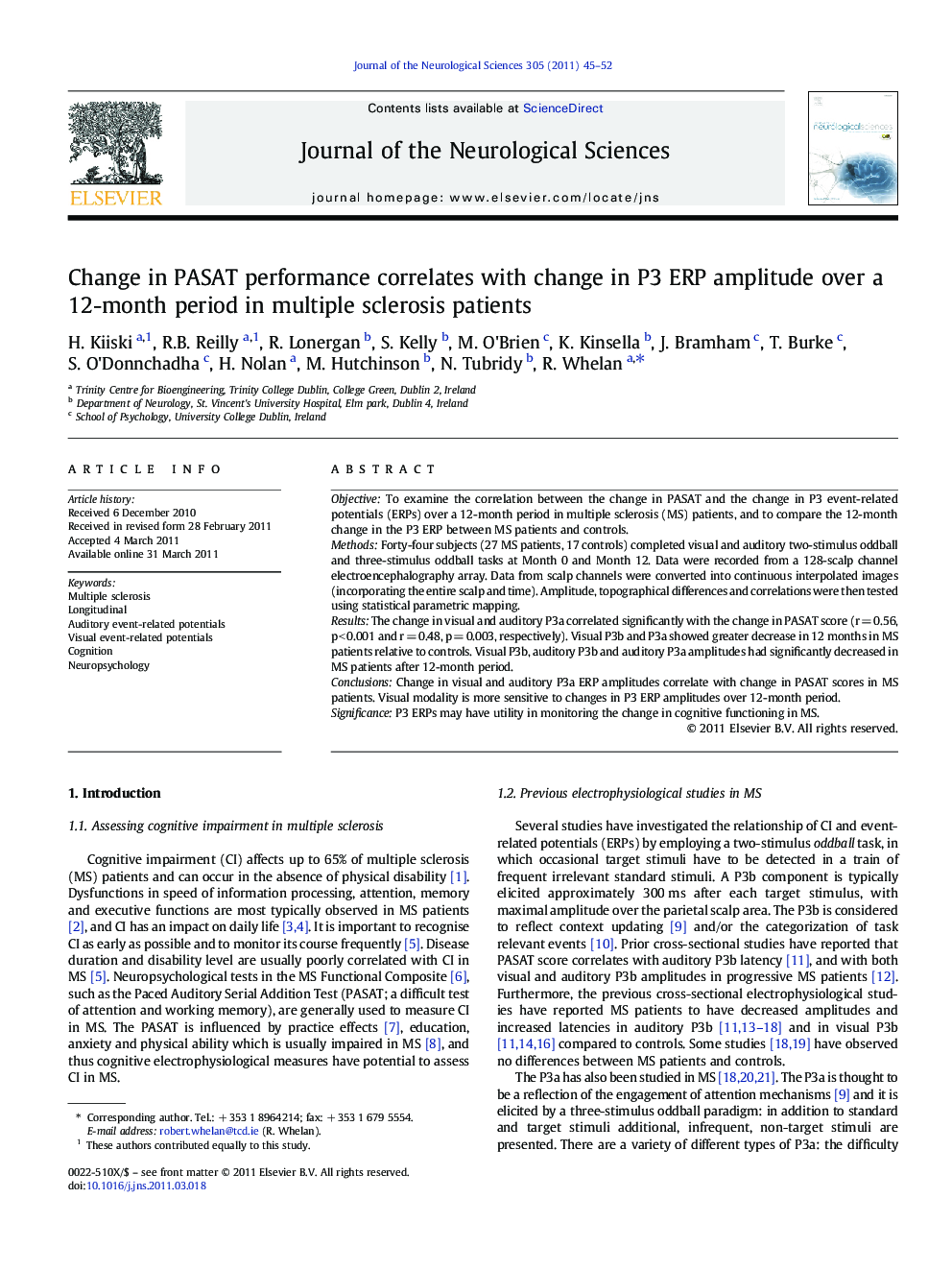| Article ID | Journal | Published Year | Pages | File Type |
|---|---|---|---|---|
| 1914332 | Journal of the Neurological Sciences | 2011 | 8 Pages |
ObjectiveTo examine the correlation between the change in PASAT and the change in P3 event-related potentials (ERPs) over a 12-month period in multiple sclerosis (MS) patients, and to compare the 12-month change in the P3 ERP between MS patients and controls.MethodsForty-four subjects (27 MS patients, 17 controls) completed visual and auditory two-stimulus oddball and three-stimulus oddball tasks at Month 0 and Month 12. Data were recorded from a 128-scalp channel electroencephalography array. Data from scalp channels were converted into continuous interpolated images (incorporating the entire scalp and time). Amplitude, topographical differences and correlations were then tested using statistical parametric mapping.ResultsThe change in visual and auditory P3a correlated significantly with the change in PASAT score (r = 0.56, p < 0.001 and r = 0.48, p = 0.003, respectively). Visual P3b and P3a showed greater decrease in 12 months in MS patients relative to controls. Visual P3b, auditory P3b and auditory P3a amplitudes had significantly decreased in MS patients after 12-month period.ConclusionsChange in visual and auditory P3a ERP amplitudes correlate with change in PASAT scores in MS patients. Visual modality is more sensitive to changes in P3 ERP amplitudes over 12-month period.SignificanceP3 ERPs may have utility in monitoring the change in cognitive functioning in MS.
